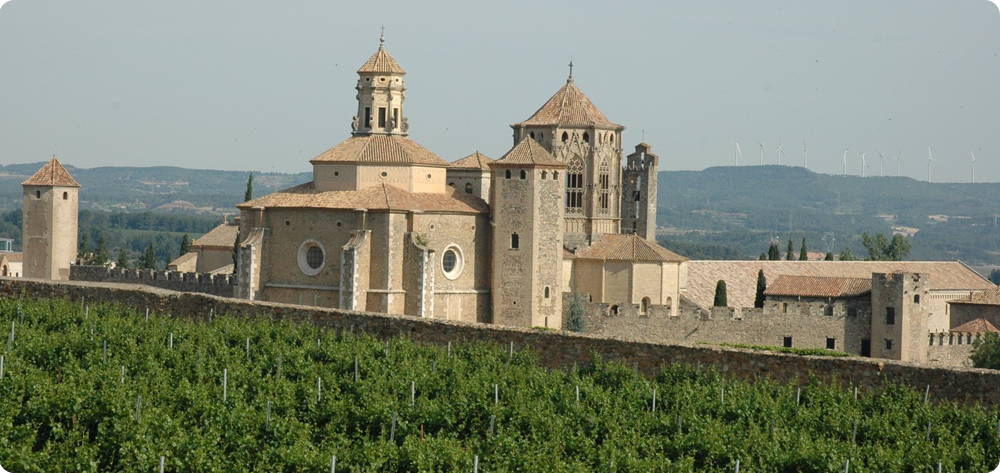
The Royal Monastery of Santa Maria de Poblet
The Royal Monastery of Santa Maria de Poblet is a monastery of the Cistercian order founded in 1150 when Ramon Berenguer IV, once the conquest of the Saracens Lleida gave Fontfreda Abbey lands in the Conca de Barberà to cistersense establish a monastery.
Situated at the foot of the mountains of Prades, in the region of Conca de Barbera. Poblet is an impressive architectural complex and can be counted among the most important monastic ensembles in Europe, being in fact the largest inhabited monastic European continent. Since the median age is an important symbolic reference to the countries of the former Crown of Aragon.
Civilly belongs to the municipality of Vimbodí -recently renamed Vimbodí and Poblet (2006)- and ecclesiastical parish of Sant Miquel de l'Espluga of Francolí (of the Archdiocese of Tarragona), two towns near the village of Montblanc with close ties with the monastery.
From the reign of Pere el Ceremoniós and during the fourteenth and fifteenth centuries pass the pantheon of the kings of the Crown of Aragon, although it also houses the tombs of former monarchs, others in the royal family and of different lineages nobility.
In 1921, after the visit of King Alfonso XIII, was declared a National Monument by the Spanish government. The 1991 was declared a World Heritage Site by UNESCO.
In 2005 he received the Creu de Sant Jordi of the Generalitat de Catalunya for the important role played in the history of our country from the twelfth century, when, with the introduction of the Cistercian Order, was configured as an asset spiritual Catalano-Aragonese Crown, the royal tombs of which the monastery is the headquarters. The membership of the Cistercian is today one of the leaders of cultural tourism.
View of the monastery, with the rampart in the first place
1: Old Sant Esteve's chapel, funeral home, the twelfth century. 2: Nursing XII century old. 3: Sant Esteve's cloister or nurse the thirteenth century. 5: Library of XIV century. 6: Chapter House. 7: Chapel early after former sacristy. 8: Pandas of the XIII century cloister. 9: Panda from the early thirteenth century, the oldest. a: Sink in the cloister. 10: Old bedroom converts, then converted to wineries. 11: Kitchen and dependencies. 12: Refectory of the late twelfth century. 13: calefactory and barbershop. 14: Old dining hall and then converted warehouses. 15: Atrium cloister built by the abbot Copons. 16: New Sacristy of the eighteenth century. PR: Royal Gate giving access to the whole monastery.
Foto: Papix
Foto: Lohen11
Foto: Tantarantana
The bell tower of the monastery:
from left to right: Romanesque, Gothic, Renaissance and Baroque
Foto: Tantarantana
The Royal Pantheon destroyed
in the s. XIX
Foto: Lourdes Cardenal
Royal Pantheon (Gospel side)
Foto: Jordi Armengol
Fountain inside the monastery

















